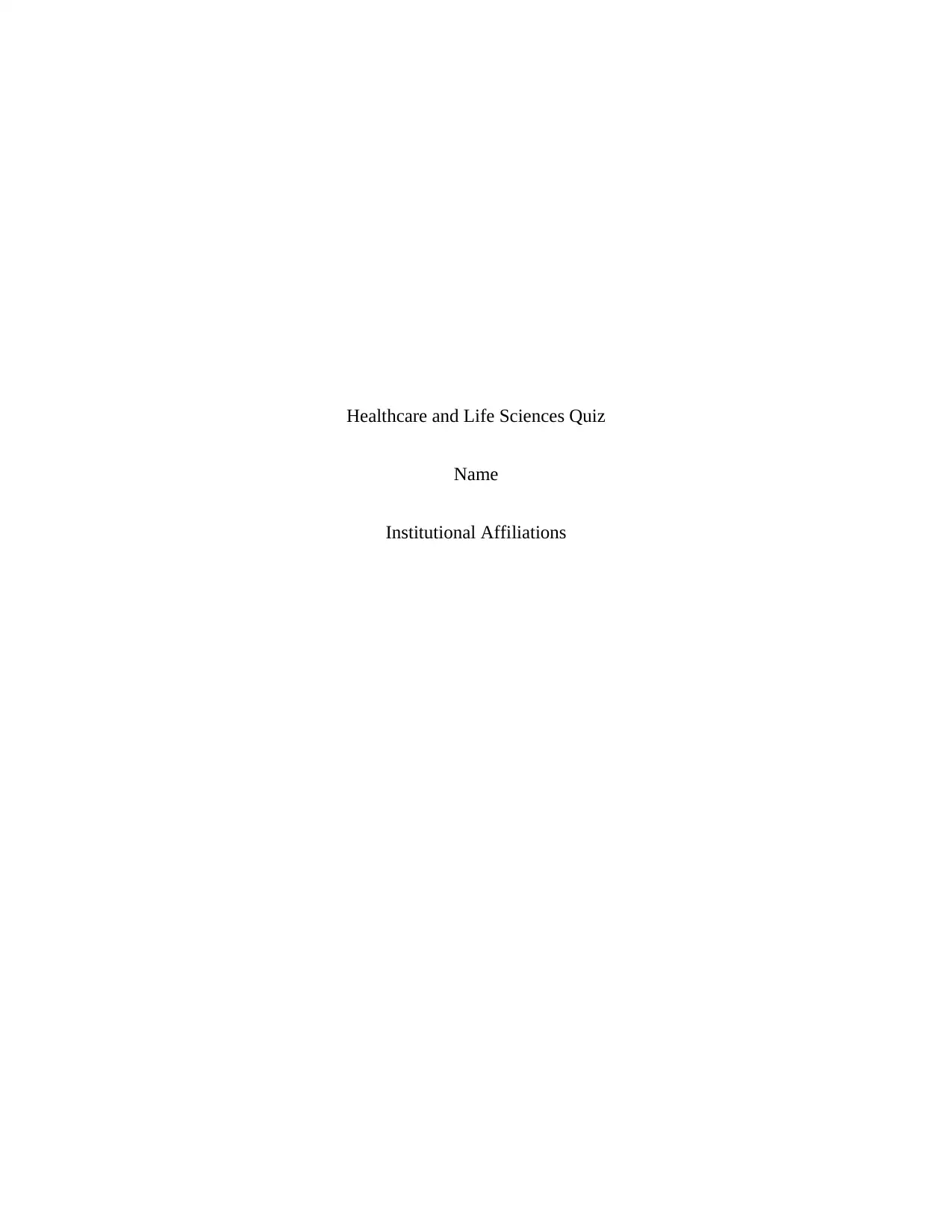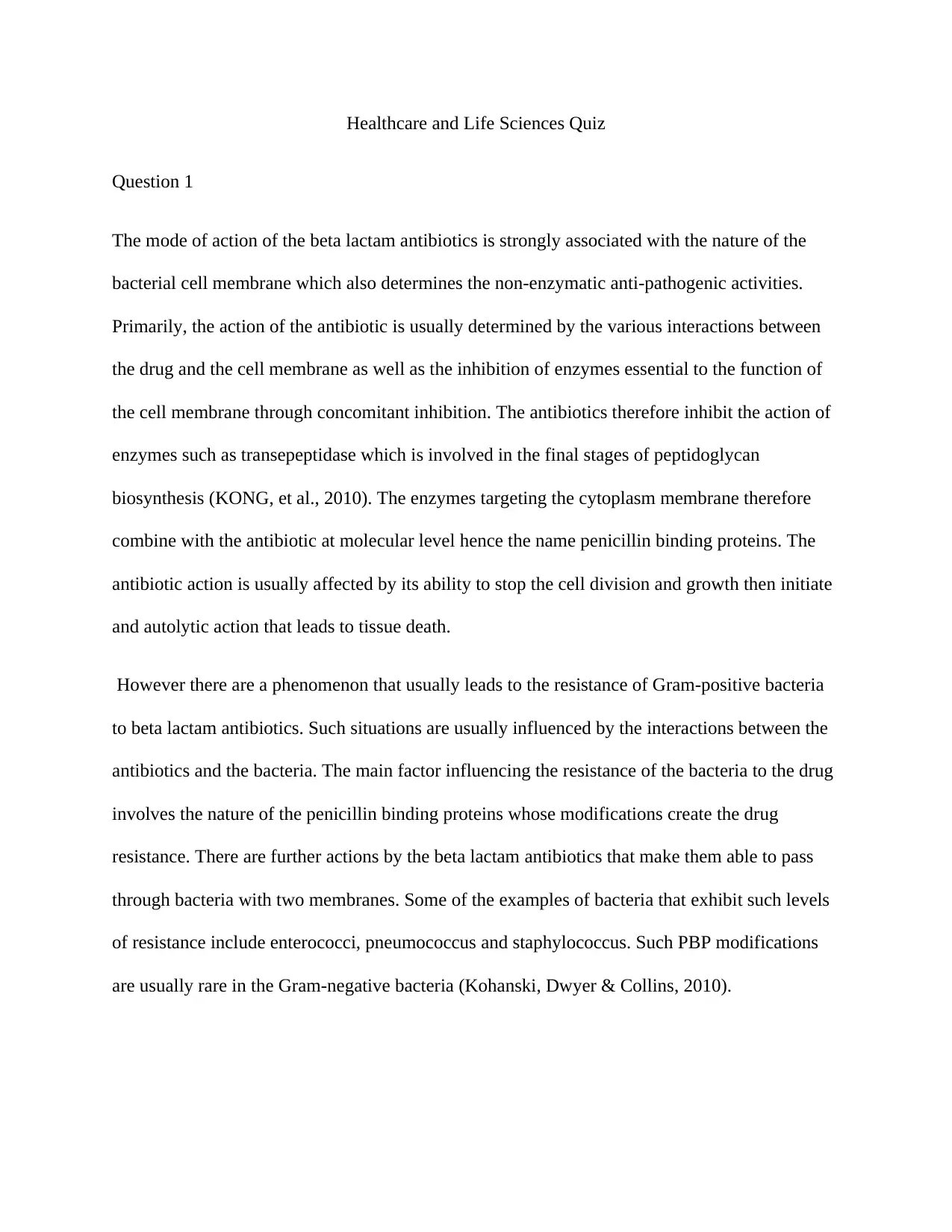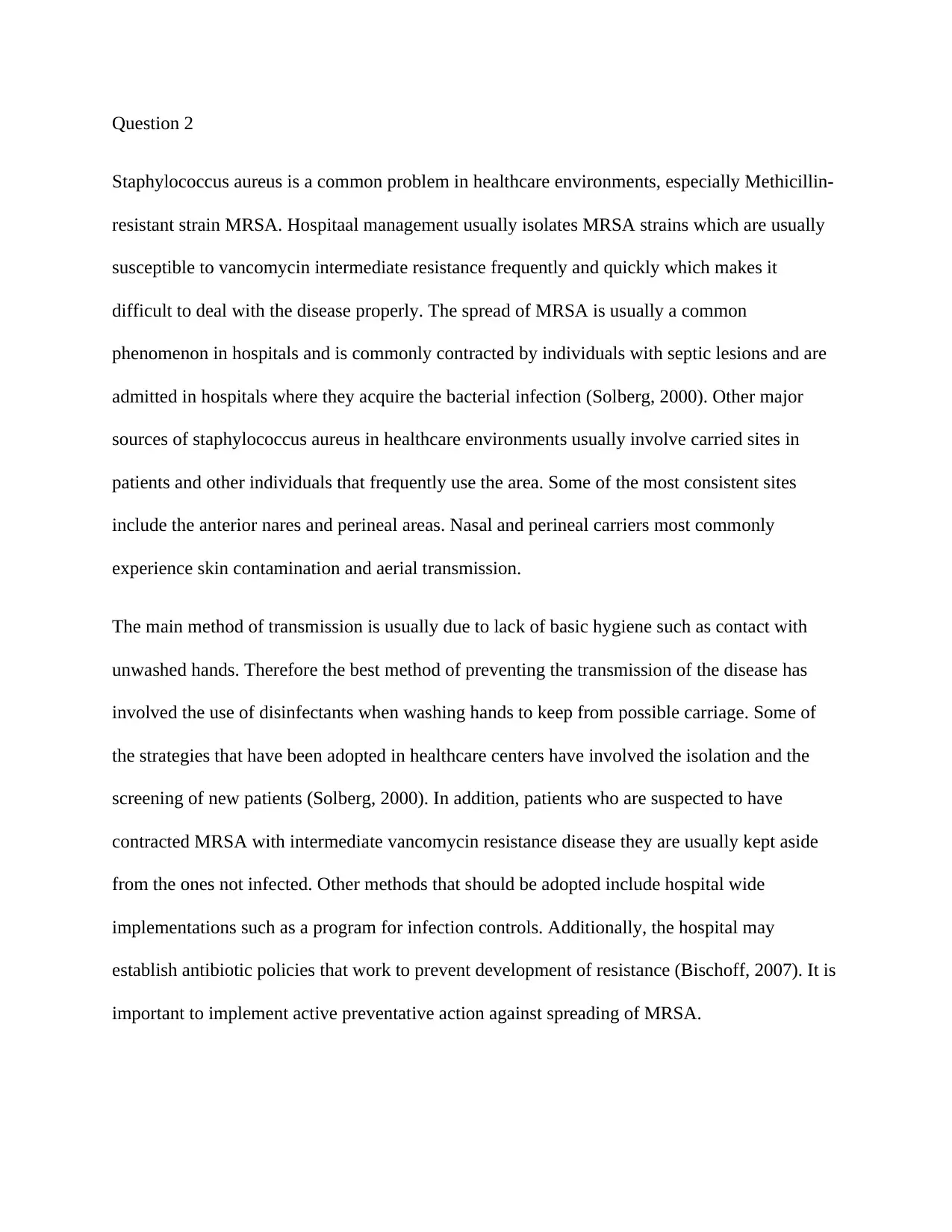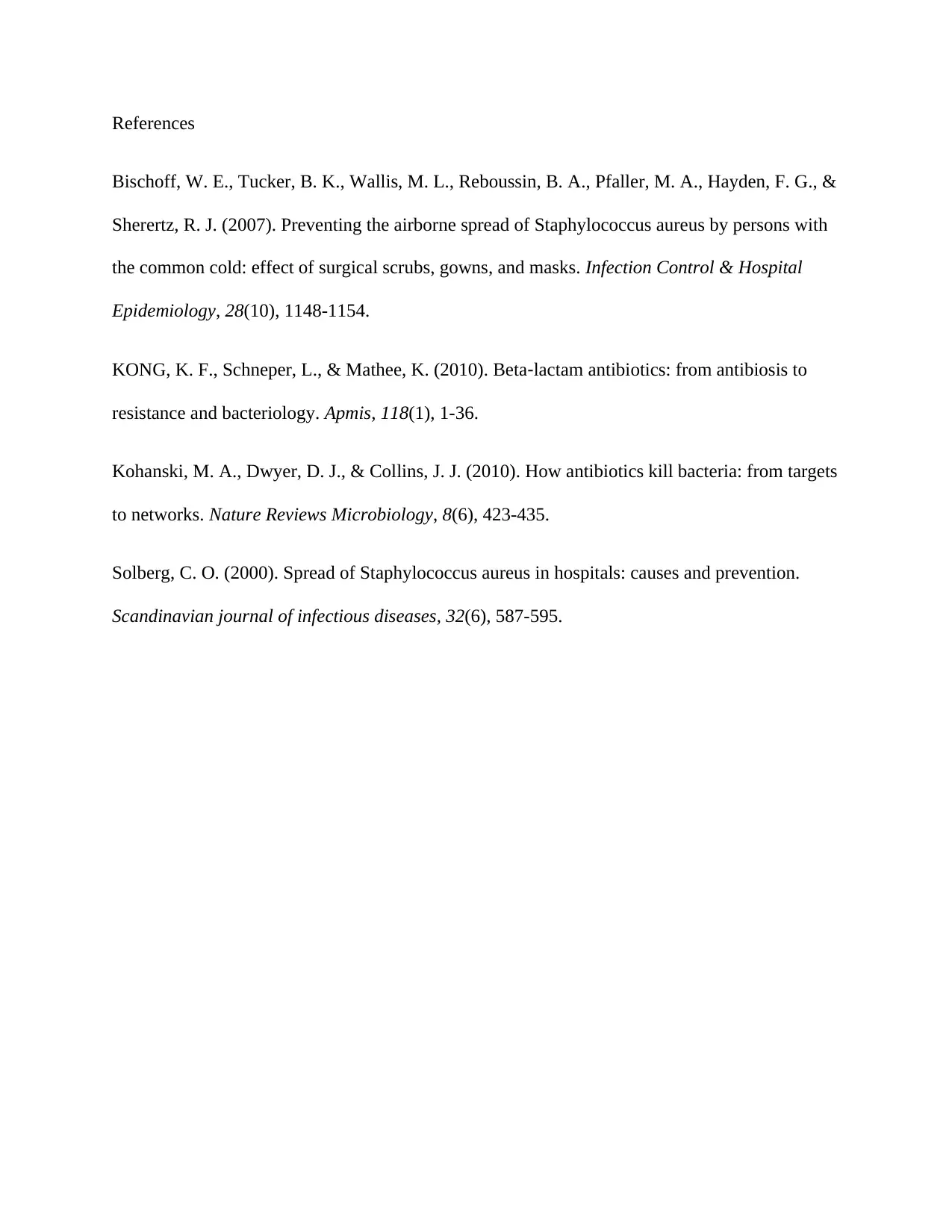Healthcare and Life Sciences Quiz: Antibiotics, MRSA, and Resistance
VerifiedAdded on 2020/04/13
|4
|756
|44
Quiz and Exam
AI Summary
This quiz delves into critical aspects of healthcare and life sciences, focusing on the mode of action and resistance mechanisms of beta-lactam antibiotics. It explores how these antibiotics interact with bacterial cell membranes, particularly inhibiting essential enzymes like transpeptidase and the role of penicillin-binding proteins (PBPs) in antibiotic resistance. The quiz also addresses the challenges posed by Staphylococcus aureus, including the Methicillin-resistant strain (MRSA), common in healthcare settings. It examines the sources and transmission of MRSA, such as contaminated hands and carriers, and highlights preventative strategies like hand hygiene, patient isolation, and hospital-wide infection control programs to combat the spread of this resistant bacteria. The document references key research papers that support these concepts.
1 out of 4










![[object Object]](/_next/static/media/star-bottom.7253800d.svg)